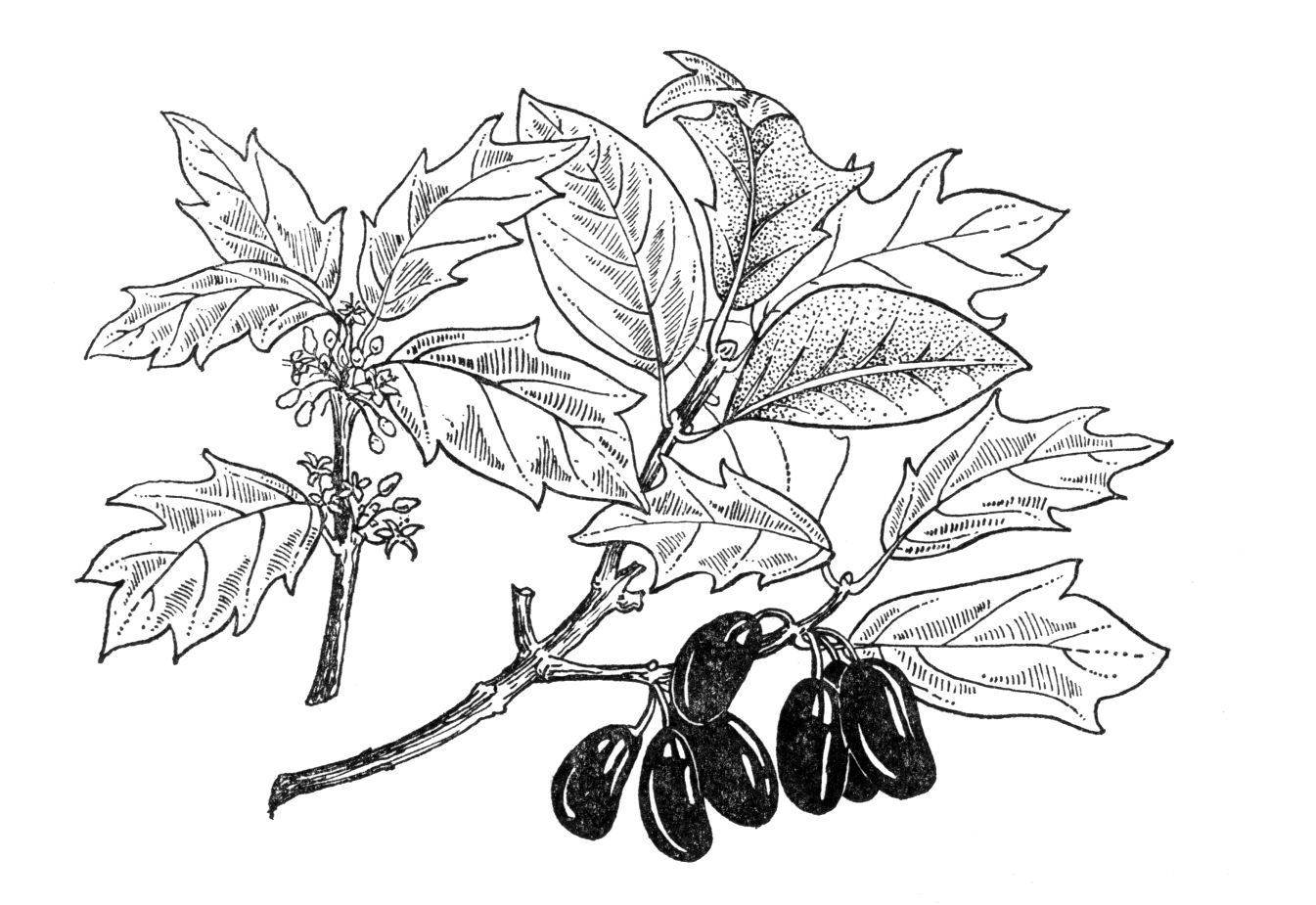Osmanthus heterophyllus
Credits
Article from Bean's Trees and Shrubs Hardy in the British Isles
Recommended citation
'Osmanthus heterophyllus' from the website Trees and Shrubs Online (treesandshrubsonline.
Genus
Synonyms
- Ilex heterophyllus G. Don
- Osmanthus aquifolium Sieb.
- O. ilicifolius (Hassk.) Carr.
- Olea ilicifolia Hassk.
Infraspecifics
An evergreen shrub of rounded, dense, bushy habit, 10 ft or more high near London, twice as high in milder localities; young shoots minutely downy. Leaves oval, 11⁄2 to 21⁄2 in. long, 1 to 11⁄2 in. wide, with two to four large spine-tipped teeth down each side, the largest teeth 1⁄2 in. long, triangular. In the adult stage the leaves on the top of the plant become oval or ovate, and quite entire at the margins, like a myrtle. The upper surface is of a dark, very glossy green, the lower one paler, both quite glabrous; stalk 1⁄4 to 1⁄2 in. long. Flowers white, fragrant, 1⁄4 in. across but with reflexed petals, borne during September and October, four or five together on short stalks, in axillary clusters. Fruits oblong, 5⁄8 in. long, 3⁄8 in. wide, blue, not often seen in this country.
Native of Japan, where it is described by Sargent as attaining the dimensions of a tree sometimes 30 ft high, with a trunk 1 ft or more in diameter; also of Formosa. It was introduced by Thomas Lobb in 1856. In foliage it is one of the handsomest of evergreens. Its leaves are very like those of the holly, and the shrub is often mistaken for one, but it can, of course, even without flower or fruit, be at once distinguished by its opposite leaves. It has been used with success as a hedge plant. It has a number of varieties, of which the following are the most important:
'Argenteomarginatus'
See ‘Variegatus’.'Aureomarginatus' ('Aureus')
Leaves margined with yellow.'Latifolius Variegatus'
leaves rather broader than in ‘variegatus’.'Myrtifolius'
As stated above, when O. heterophyllus gets to the adult stage the upper part of the shrub bears quite entire leaves, 1 to 2 in. long, narrow oval, and unarmed except for the sometimes spine-tipped apex. A similar transformation in the shape of the uppermost leaves is seen in the holly. Cuttings of these uppermost branches take root easily, and as they do not revert to the spiny-leaved type, they are known as the “myrtle-leaved osmanthus”. On its own roots this state of O. heterophyllus is dwarfer and more spreading than the type with toothed leaves.'Purpureus'
In this variety, which was raised at Kew in 1880, the young leaves are of a black-purple shade; they and the very young shoots, in their black glossiness, have much the aspect of having been dipped in tar. It is the hardiest of all the forms of this osmanthus. The frosts of February 1895 left it quite unaffected, whilst all the others here mentioned were more or less seriously injured at Kew.
'Rotundifolius'
A dwarf, very slow-growing shrub, with rigid, leathery leaves, 1 to 1{1/2} in. long, half to two-thirds as wide, more or less obovate, with a marginal vein, wavy at the margins.'Variegatus' ('Argenteomarginatus')
Leaves margined with creamy white.



